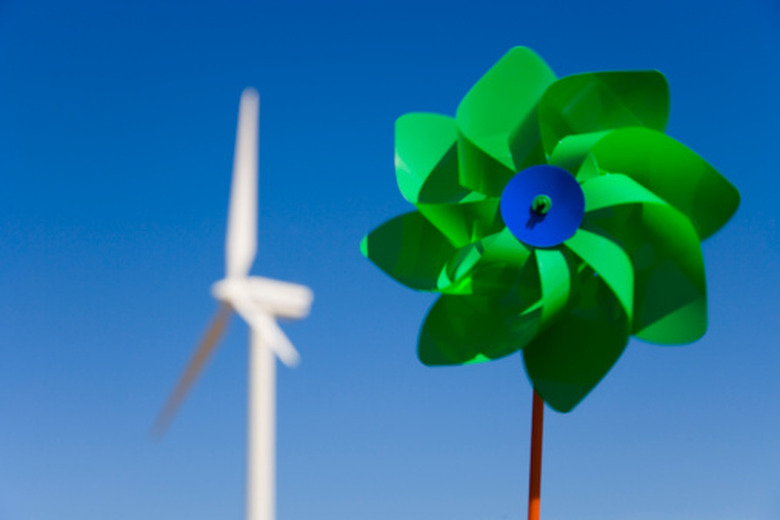Science Projects On Mechanical Energy
It sounds like a riddle: what's something you cannot see or hold but that is all around you and is able to make things move? The answer is mechanical energy. Mechanical energy (ME) can exist as either kinetic or potential energy. A moving train represents kinetic energy by virtue of its motion. A drawn bow possesses potential energy because of its stored energy.
Mechanical and Electrical Energy with Magnets
Mechanical and Electrical Energy with Magnets
"The Science Fair Project Guidebook" offers an array of research experiments to discuss and perform, with activities for grades 4 through 12. One electricity project appropriate for grades 7 through 12 involves magnetism achieved through ME. The materials include: large and small magnets, large and small coils, a voltage meter and clips for the meter. This experiment illustrates that the student can make electrical energy by using his or her own ME to move a magnet across a coil of copper wiring, with divergent results being produced from the smaller magnet than from the larger.
Paper Airplanes and Parachutes: Potential and Kinetic Energy
Paper Airplanes and Parachutes: Potential and Kinetic Energy
Students can measure which paper airplanes fly the farthest. Have students consider the following conditions for flight: 1) Does the paper type or shape of the airplane affect its flight?; 2) Does the force or thrust used to propel the plane alter its path and distance?; 3) Does the location of the experiment?
The same is true for a parachute experiment. A student may wonder what the best shape, size or material is for a parachute. Both kinetic and potential energy are involved in the experiment. Kinetic, as the parachute falls, and potential, as it is held aloft.
Testing Elastic Energy with Slinky Toys
Testing Elastic Energy with Slinky Toys
A stationary Slinky toy can illustrate equilibrium. No ME is present in this initial state, but if a student applies force to one end while holding the other — in effect twisting the coil — he or she has added ME to the equation. The Corporation for Public Access to Science and Technology details a simpler version of this science project on ME. Penn State's "Slinky Lab," on the other hand, is more appropriate for advanced high school or college level physics.
The Marshmallow Catapult: Simple Machines and Mechanical Energy
The Marshmallow Catapult: Simple Machines and Mechanical Energy
A catapult can illustrate concepts of motion, load, force and ME. It can also demonstrate the use of simple machines: in this case, a lever. Some versions of this experiment feature the use of milk cartons or tissue boxes to house the catapult. This version of the marshmallow catapult from the Tennessee Technology Engineering Education Association requires the use of a mousetrap for the lever, so students should be supervised to avoid injury. Otherwise, only erasers, rubber bands, Popsicle sticks, a spoon, duct tape and marshmallows are required to experiment with ME.
Cite This Article
MLA
Ramsey, Leigh. "Science Projects On Mechanical Energy" sciencing.com, https://www.sciencing.com/science-projects-mechanical-energy-8456530/. 24 April 2017.
APA
Ramsey, Leigh. (2017, April 24). Science Projects On Mechanical Energy. sciencing.com. Retrieved from https://www.sciencing.com/science-projects-mechanical-energy-8456530/
Chicago
Ramsey, Leigh. Science Projects On Mechanical Energy last modified August 30, 2022. https://www.sciencing.com/science-projects-mechanical-energy-8456530/

